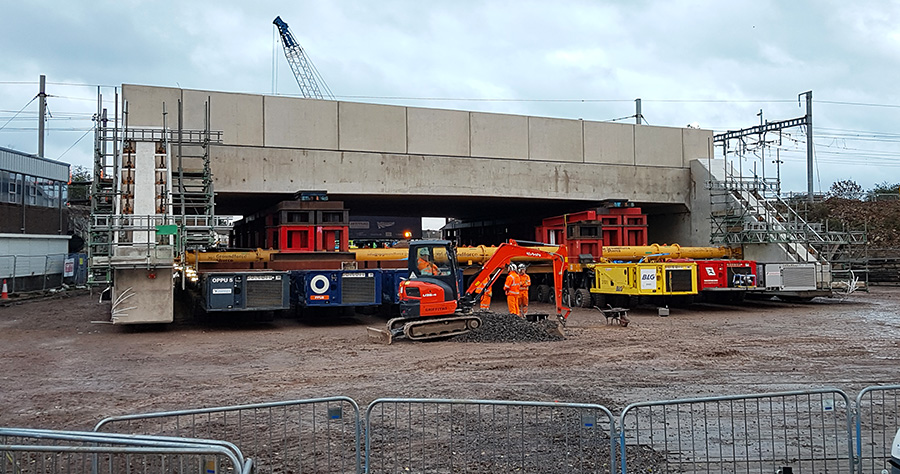
The setback happened mid-way through a 13-day closure of the main London to South Wales railway during which the existing narrow-arch bridge was to be demolished and replaced with a much wider precast concrete structure which had been built in an adjacent compound, around 150m away.


Once the debris had been cleared away, pile rigs were brought in to install sheet piles between the pile caps (these are the four corner foundation points for the replacement bridge which, over many months, had already been piled to a depth of 24m).

Not wishing to encourage crowds of spectators (in view of the current pandemic), South Gloucestershire Council had chosen not to release the planned time for the new bridge to be slowly wheeled into place, but the word on the street was that it was set for 7pm on Thursday 28th October. The operation, which was expected to last between three and five hours, was billed as the heaviest bridge move of its kind ever carried out in the UK.

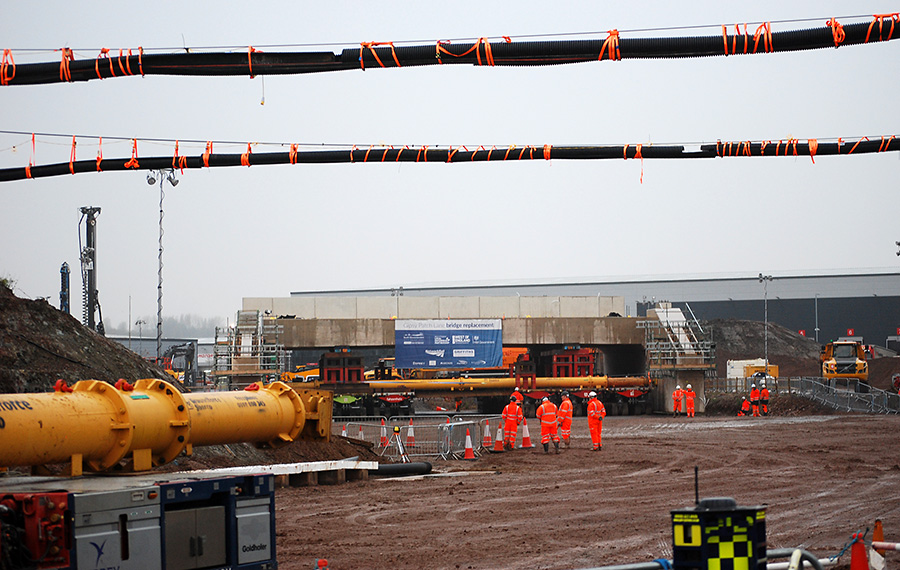
and stayed.

Saturday morning saw piles of thick wooden sleepers being delivered to the site and in the afternoon an effort was made to push the bridge back using two excavators, but without success.

Whatever the outcome, the delay of three days in “landing” the new bridge was thought to have massively increased the risk that the project cannot be completed in time for the railway to be reopened early on Saturday 7th November as planned, bringing with it penalties of millions of pounds a day.
Once the bridge has been successfully lowered into position and secured, the further work that needs to be carried out includes infilling the embankment, relaying the track and reinstating the overhead line equipment.
By the time you read this, you should know if they made it!
More information and related links:
- Cribbs Patchway MetroBus Extension (SGC)
- MetroBus Extension Build (SGJ)
- Photo album: Gipsy Patch Lane Railway Bridge Replacement (SGJ)
This article originally appeared in the November/December 2020 issue of the Stoke Gifford Journal magazine (on pages 4 & 5). The magazine is delivered FREE, nine times a year, to over 5,000 homes in Stoke Gifford, Little Stoke and Harry Stoke. Phone 01454 300 400 to enquire about advertising or leaflet insertion.
Postscript: Bridge still stuck; railway closure extended
Added Sunday 8th November 2020.
Council statement
Statement issued by South Gloucestershire Council on 2nd November:
Despite detailed planning and preparation, our contractor, Network Rail has encountered a significant issue moving the new 4,260-tonne Gipsy Patch Lane bridge into place.
The bridge, which is already built, is being moved into position on a number of independent hydraulic transporters. Having successfully moved two thirds of the way into place the bridge transporters are now stuck.
Our focus, alongside Network Rail, is on resolving the issue so that the bridge can be moved into position.
This is likely to take a number of days and will delay the re-opening of the mainline.Rail services are still operating via alternative routes and rail replacement services.
First pull back
At around 2pm on Wednesday 4th November, five heavy haulage trucks and a bulldozer attempted to free the “stuck” bridge by pulling on metal cables attached to the self-propelled modular transporter (SPMT) sitting beneath it.

Tarmac and metal plates were then laid at the front end, in an effort to provide a more stable footing for the bridge move to resume using the SPMT.
Council statement
Statement issued by South Gloucestershire Council on 6th November:
It is too early to say why the wheels have become stuck. This is a highly complex engineering project and is the heaviest lift of its kind ever undertaken in the UK, supported by detailed designs, modelling and preparatory work by Network Rail and its contractor Alun Griffiths. Understanding why this hasn’t worked will take time, and we are already working on that in parallel to our prime focus which is to get the work underway to move the bridge, free up the automated platform it is sitting on, and undertake the work required to get the bridge in place, and resume rail services.
Network Rail and its contractor Alun Griffiths are continuing to work around the clock to resolve the issue and currently undertaking detailed work on site so that the bridge can be moved into position. We will continue to update the community and our stakeholders on the work as it progresses.
Railway closure extended
Statement from GWR on Thursday 5th November:
We are aware work to replace the road bridge at Gipsy Patch Lane is running behind schedule, and will not be completed by Saturday 7th November as planned. We will continue to provide alternative travel options for customers until the work is completed.
The detailed changes to train times will be included in online journey planners from Friday 6 November.
On Friday 6th November, the National Rail Enquiries website was updated to indicate that the railway closure will continue until “at least Sunday 15th November”.
Second pull back
A second attempt to pull back the bridge was made in the early hours of Sunday 8th November.
It appears that this succeeded by pulling the bridge back a further 3-5 metres.
Further tarmac is being laid in front and to the side of the bridge. Metal plates are being laid on top of the tarmac.
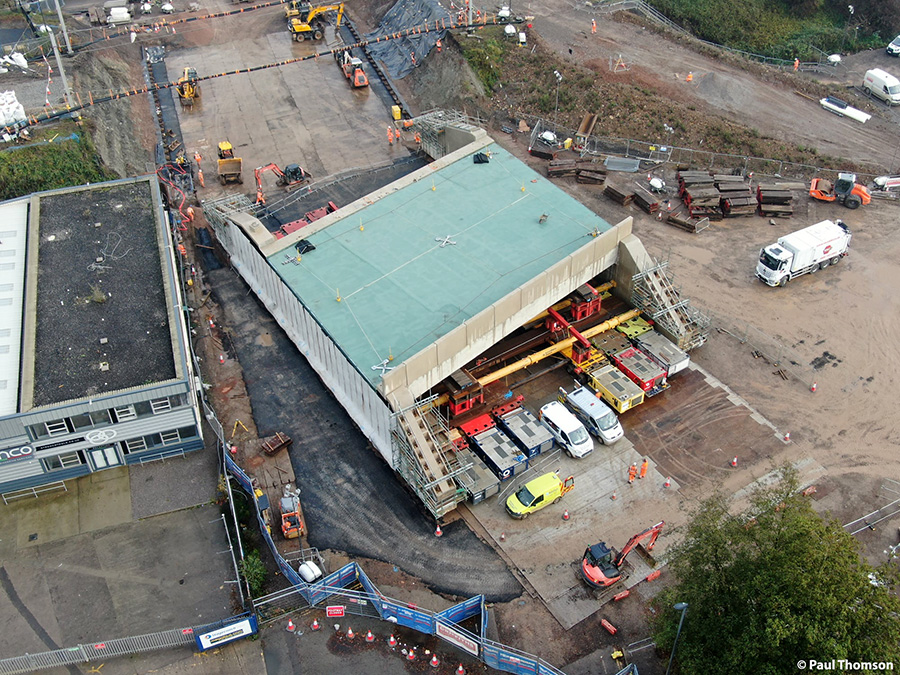
Update: Modular transporters withdrawn; railway closure extended
Added Thursday 12th November 2020.

The wall and wings of the bridge are now resting on wooden sleepers and wooden boards.
On Thursday 12th November, tarmac was being laid on the ground underneath the bridge that has been exposed by pulling back the transporters.
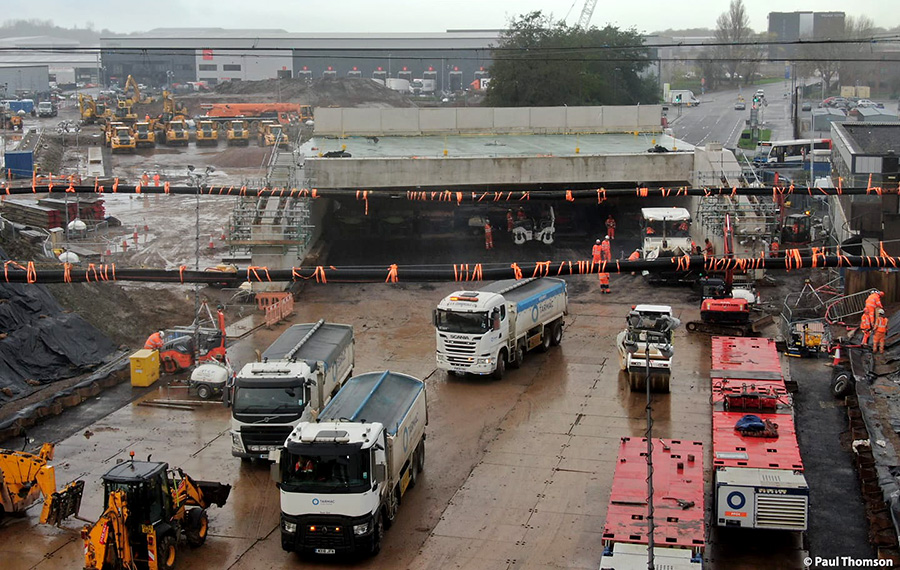
Statement issued by South Gloucestershire Council on 12th November:
Work to complete the bridge replacement on Gipsy Patch Lane is continuing.
This is a highly complex engineering project. Weighing 4,260-tonnes, the new bridge was the heaviest lift of its kind ever undertaken in the UK and was not without risk.
The new bridge, which was built on site, was being moved into position using specialist hydraulic transporters which managed to successfully move it two thirds of the way into position before Network Rail, and its contractor Alun Griffiths, encountered a significant problem. The bridge is approximately 40 metres from its final position.
A separate team within Network Rail are investigating why the detailed plan did not work, in the meantime, the focus is on completing the work as quickly and as safely as possible.
Last week Network Rail and Alun Griffiths established a comprehensive plan to move the bridge into place and reinstate the railway, and they have been working on this since then. This plan involves several contingency options to help manage the significant complexity and risks involved.
Work is now focussed on moving the bridge temporarily off the hydraulic transporters it is sitting on, to reinforce the roadway and then enable the transporters to move the bridge successfully into place. Given the high risk and complex nature of the operation, Network Rail and Alun Griffiths have brought on board additional resources and specialists to assist them.
We will continue to update the community and our stakeholders on the work as it progresses. A further update will be issued on Monday 16th November.
The rail line between Bristol and Newport remains closed at this time; the current diversionary routes between London, Bristol and Wales, and the rail replacement service specifically between Bristol and Newport will remain in place until at least Monday 23rd November, however, this date could be subject to further change.
We apologise for any inconvenience being caused by these ongoing works and we thank the local community for their patience.
By 4pm on Thursday 12th November, the transporter units had been moved back under the bridge and partially withdrawn from the front. This has enabled tarmac to be laid under the bridge towards the back.
It appears that some of the transporter units in the second column from the right (when viewed from the east) are being replaced during this operation.
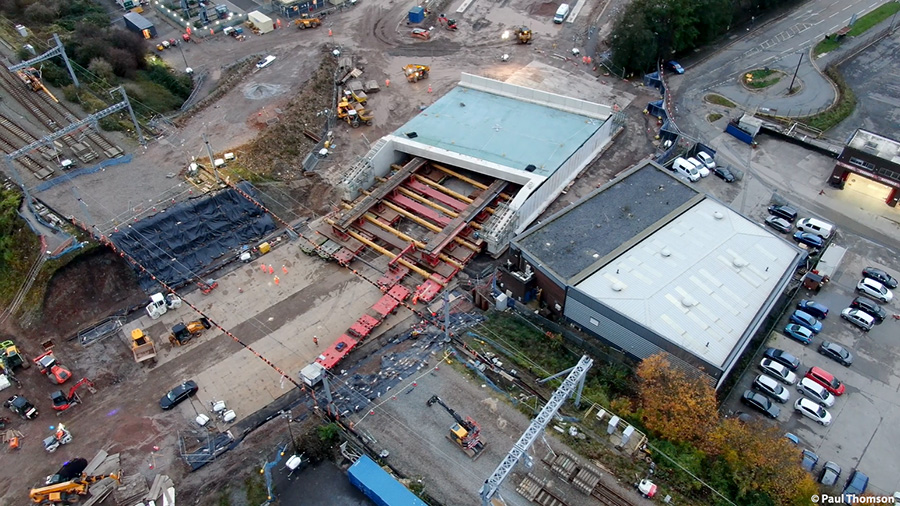
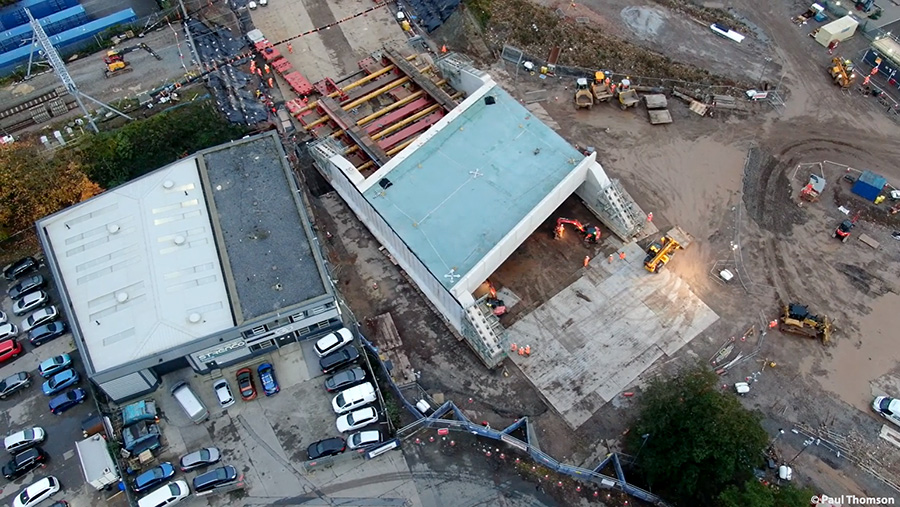
Update: Bridge landed!
Added Saturday 14th November 2020.

After being “stuck” for 15 days, the replacement railway bridge at Gipsy Patch Lane was (we believe) successfully moved into its intended position this morning (Saturday 14th November 2020).

Update: Rail closure to continue for “at least” another week
Statement issued by South Gloucestershire Council on Sunday 15th November:
The bridge is IN! We have moved the new Gipsy Patch Lane bridge into place.
Now Network Rail, and its contractor Alun Griffiths, have got a lot of work to do around the structure to rebuild the abutments and to reinstate the rail line.
Acoustic barriers are in place but this work will be noisy. The work will be carried out round the clock so it is completed as quickly as possible. We apologise for any disruption.
If you have any questions about the bridge replacement work call the Network Rail 24/7 helpline on 03457 11 41 41.
Rail replacement services, specifically between Bristol and Newport, will remain in place until at least Monday 23rd November.
Tweet made by Cllr Toby Savage, leader of South Gloucestershire Council on Monday 16th November 2020:
🚨 HEAVIEST BRIDGE LIFT OF ITS KIND UNDERTAKEN IN 🇬🇧 COMPLETED 🚨
Pushing the frontiers of engineering was never going to go smoothly. I've been bowled over by partnership working of @networkrailwest @AlunGriffiths_ @sgloscouncil over recent days 👏👏👏https://t.co/kX43fj77OG
— Cllr Toby Savage (@SavageToby1) November 16, 2020
Update: Railway reopening date confirmed
Added Sunday 22nd November 2020.
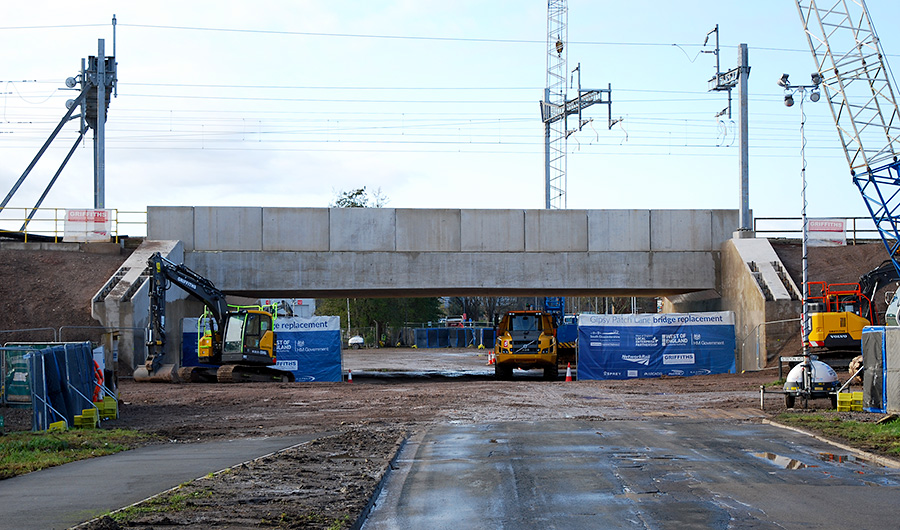
Network Rail has confirmed that the railway will reopen on Monday 23rd November 2020.
Mike Gallop, route director for Network Rail, said:
“We’ve had some significant problems at this site , as you know, but we’re now in the final stages of bringing the railway back to life.”
“It’s been a huge logistical and technical challenge; and our teams and our contractors’ teams, have been working day and night to get the railway open.”
“I’m really pleased to confirm that we’re going to open the railway on Monday 23rd November.”
“So, on behalf of Network Rail, I’d like to say a really big thank you for your patience; to local residents, who obviously, have been so affected by our works, and most of all, to the travelling public, who I’m afraid, we have inconvenienced longer than we should. Please accept my apologies.”
🛠️ Work to reinstate the railway over Gipsy Patch Bridge is nearly finished.
🚆 Train services between England & South Wales will resume Monday morning.
🎬 Earlier, Network Rail Director Mike Gallop, gave a message of thanks.#GipsyPatchSGC pic.twitter.com/qOiVJcsE14
— South Glos Council (@sgloscouncil) November 22, 2020

For the latest progress on the project, view our frequently updated photo album on Google Photos: Gipsy Patch Lane Railway Bridge Replacement
What happens next? Visit our MetroBus Extension Build page.


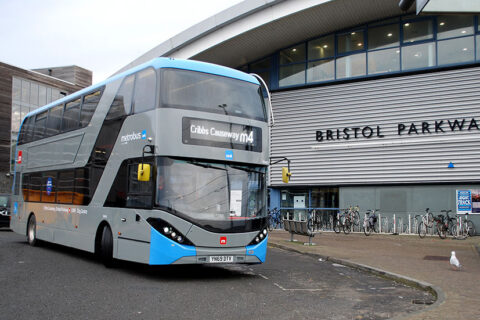
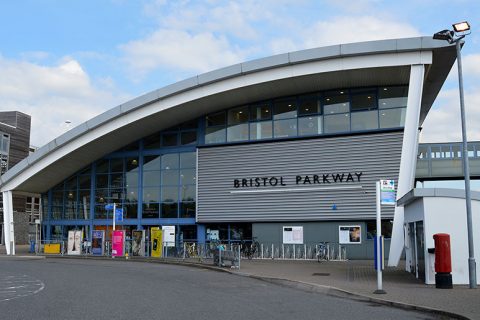
An observer’s update. As of 12 noon on Tues 9/11/20, no significant change. After the bridge is landed, a full week’s work will be required to reopen the railway. If it goes in tomorrow, that means Wed 17/11 at the earliest, for resumption of rail traffic. But several more days of delay are not unlikely? This bridge was first posted for replacement (at least) 50 years ago, so a couple more weeks won’t hurt!?
SGC’s 6/11/20 statement on the sinking bridge is disengenuous. It sank because the ground was too soft to support the weight. In a drought it might have held up. After many prolonged hard frosts it might have coped. But by 28/10/20, roll-in night, there had been many days of heavy rain. This created ideal conditions for soil liquefaction under pressure, of the exposed ground of the roll-in route. So the bridge sank. QED!? A wheel-loads comparison: A 6-axle ‘artic’, 50T on 20 wheels = 2.5T/wheel. The SPMT (Self-Propelled Modular Transport). Width 6 x 4-wheeled lines = 24, x Length 40-60 axle lines = 960/1440 total wheels = 4.4 to 3.0T/wheel for a 4260T load. Higher than a normal lorry, and clearly too high for this operation, on saturated ground?
An excellent article, poor coverage of this elsewhere if at all.
Points on SGC’s 12/11/20 statement. 1: At 4,260T this may be the heaviest UK lift to date, but the heaviest ever SPMT world lift stands at 17,000T, ie 4 times ours. (Marine salvage, not a bridge.) 2: The move aspect requires skill, patience, and close attention to detail, but it is not ‘complex’. The ‘c.a.t.d.’ bit was where things went wrong? The bridge was constructed on firm ground. It then went onto soft ground. Could this have been foreseen/discovered? Yes. Why wasn’t it? Good question!? An engineer’s boot, ie a thorough walk over the ground ahead might have raised qualms? But testing for differential ground bearing capacities, over the whole way, from where it was to where it had to go, should have been done. Was it? It looks like not? And then, on finding such, ground reinforcing measures applied before, not after, the mishap. 3: A serious concern may now be, has the structural integrity of the bridge been compromised by its ‘nose dive’ into the mud? It will not have been designed to tolerate much non-service type bending. 4: A rail reopening date of 23/11/20 appears highly optimistic.
The question is who will be liable for the Millions of Pounds per day in penalty charges, hopefully the contractor and not Council Tax Payers.
I’m not a Civil Engineer, but suggest it might have been simpler and less risky to have built bridge in a more traditional way which I suspect would have been completed in less time than it is taking so far. Everything is so complex nowadays so if project risks are not fully recognised at the outset this will lead to increased cost and time over-runs, which has obviously happened in this case. My thoughts for the future …. Keep it simple! At the end of the day it just a bridge and the last one was simply brick built and lasted for many, many years…. Unfortunately it was just a little small. Hope redundancy has been factored into the new design for the future and that the new bridge, eventually plugs the rather embarrassing gap very soon.
Unless Ed is a ‘night owl’ and ‘moderates’ after 1700 hrs, the bridge may be in before this is read (if it ever is!?). SPMTs back under bridge as of 1600 Fri 13/11/20. Overnight roll-in/landing anticipated. (Non-superstitious contractor?) Rail reopening date of 23/11/20 suddenly looking achievable. Move in dark again. Had first attempt been made in daylight, soft ground problem might have been spotted by ‘pilot’, and move stopped before they were in too deep to ‘go astern’? Sensible precautionary approach trumped by time pressure, no doubt?
As of 1100 hrs GMT on Sat 14/11/20, the bridge appeared to be almost in position. An hour or three more, and it most probably will be. Congratulations to all conerned!
Its shameful that this road has been closed for such a long period of time just to install one single bridge. It seems to take comparatively less time to build office blocks and shopping malls which are massive and complex in comparison.
The person suggesting more traditional builds might have time advantages has a point, in more ways than one. It would also look a lot less ugly for this bridge looks awful even when new. Its already a visual blight on the residential area. It will age very badly too, just look at the concrete flyover further along the same road in the industrial zone.
That no one seems to have checked the ground stability (an obvious issue and I am not an engineer) is the icing on the cake.
Great photos by the way and a good read.
‘We’ have moved the new bridge in, says SGC in its 15/11/20 statement. The ‘we’ should surely have been a ‘they’? If SGC played any practical part in getting the job done, what was it? Griffiths got themselves into a hole, and then, with aid from others, including the Royal Engineers, got themselves out of it. If SGC did anything other issue statements (and no doubt fret on the sidelines?), I would very much like to hear about it.
The long road closure is mostly (c.90%?) for the associated SGC road works. The bridge itself was scheduled to take a mere 2 weeks, out of many (20+?) months of the overall project time. Office blocks and shopping malls are mostly built on clear sites, and so rarely involve railways. The ABC (Accelerated Bridge Construction) method was used here to keep the railway closure period to minimum. Built by traditional means, the bridge would have taken (at least) 2 months to install, not the 2 weeks planned. Although 2 weeks were lost, 4 is still a gain on 8!
Genuinely moronic to attempt to do this during the time of year when the ground is at its wettest and therefore softest. Congratulations to all the minnows involved in the planning!
It was originally planned for April when the ground would have been firm. Unfortunately, a pandemic arrived which has delayed things. Only a moron wouldn’t have realised that.
The bridge is now open for cyclists and pedestrians, I cycled through there this morning
@Simon, Thanks for your comment. A route under the bridge for pedestrians and dismounted cyclists was reopened on 10th December 2020. The latest news about the project can be found on our MetroBus Extension Build page.
Regarding Phil J’s notion (19/11/20) that the ground would have been firm in April, this suggests a singular lack of acquaintance with our weather? There may have been ‘dry seasons’ a few decades back, but no more. Climate change has put an end to all certainties there. Saturation in any/all months is the rule now. I can confirm that the bridge was still open to foot traffic on 21/12/20.